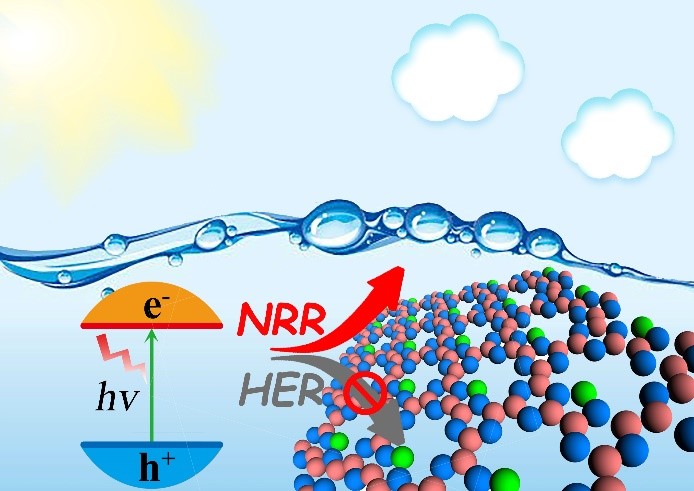Recently, Prof. Dai Ying's group from the School of Physics found that B decoratedg-CN (B@g-CN) couldserve as a novel metal-free photocatalyst for highly efficient N2fixation and reduction to ammonia under visible and even infrared spectra. This work has great significance for unraveling the reaction mechanism of photocatalytic nitrogen fixation and developing high-efficiency photocatalytic materials.
The work has been published on Nano Letters(IF=12.279) entitled "Metal-Free B@g‑CN: Visible/Infrared Light-Driven Single Atom Photocatalyst Enables Spontaneous Dinitrogen Reduction to Ammonia". The first author is Ph.D. student Lv Xingshuai from the School of Physics, Associate Prof. Wei Wei and Prof. Dai Ying are corresponding authors, and Shandong University is the author's institution.

Ammonia synthesis is a classic reaction in catalysis, and several times of noble prize awards indicate that it has great significance from mechanism to industrial application. Currently, Haber-Bosch process has been widely applied in industrial ammonia synthesis, however, the reaction usually requires harsh condition (high temperature and high pressure). In addition, the emission of CO2during the reaction accounts for 3% of the global total, and consumes plenty of energy. The electrocatalytic nitrogen fixation simulates the process of nitrogen reduction using natural nitrogenase under mild condition. Current studies mainly focus on electrocatalytic nitrogen reduction reaction (NRR) using metal-based electrocatalysts, while metal-free and solar-driven photocatalysts have been rarely explored. Therefore, developing novel NRR photocatalysts is the focus of this area.
Prof. Dai Ying found that B decoratedg-CN couldserve as a novel metal-free photocatalyst for N2fixation with the NRR overpotential of only 0.15 V. The as-designedB@g-CN possesses strong visible/infrared light absorption. Importantly, the external potential provided by photogenerated electrons endows B@g-CN spontaneous NRR, marking a novel photo-driven NRR catalyst. This work unravels the role of photoelectrons in photocatalytic process from excited state view, elucidates the nature of photocatalytic NRR and broadens the design ideas of photocatalytic materials, which is of great significance for developing novel photocatalysts.
In recent years, Prof. Dai Ying’s group has yielded important outcomes in the design, regulation and mechanism of energy and environmental materials, such as in photocatalysis, solar cells and so on. The corresponding outcomes have been published on Nature Commnu., Nano Lett., Nano Energy, Adv. Mater., Angew. Chem. In. Ed., Appl. Catal. B: Environ.and so on.
This work is supported by the National Natural Science Foundation of China, the Taishan Scholar Program of Shandong Province, the Natural Science Foundation of Shandong Province, and the Young Scholars Program of Shandong University (YSPSDU).
Source: the School of Physics
Written by: Wei Wei
Edited by: Xie Tingting